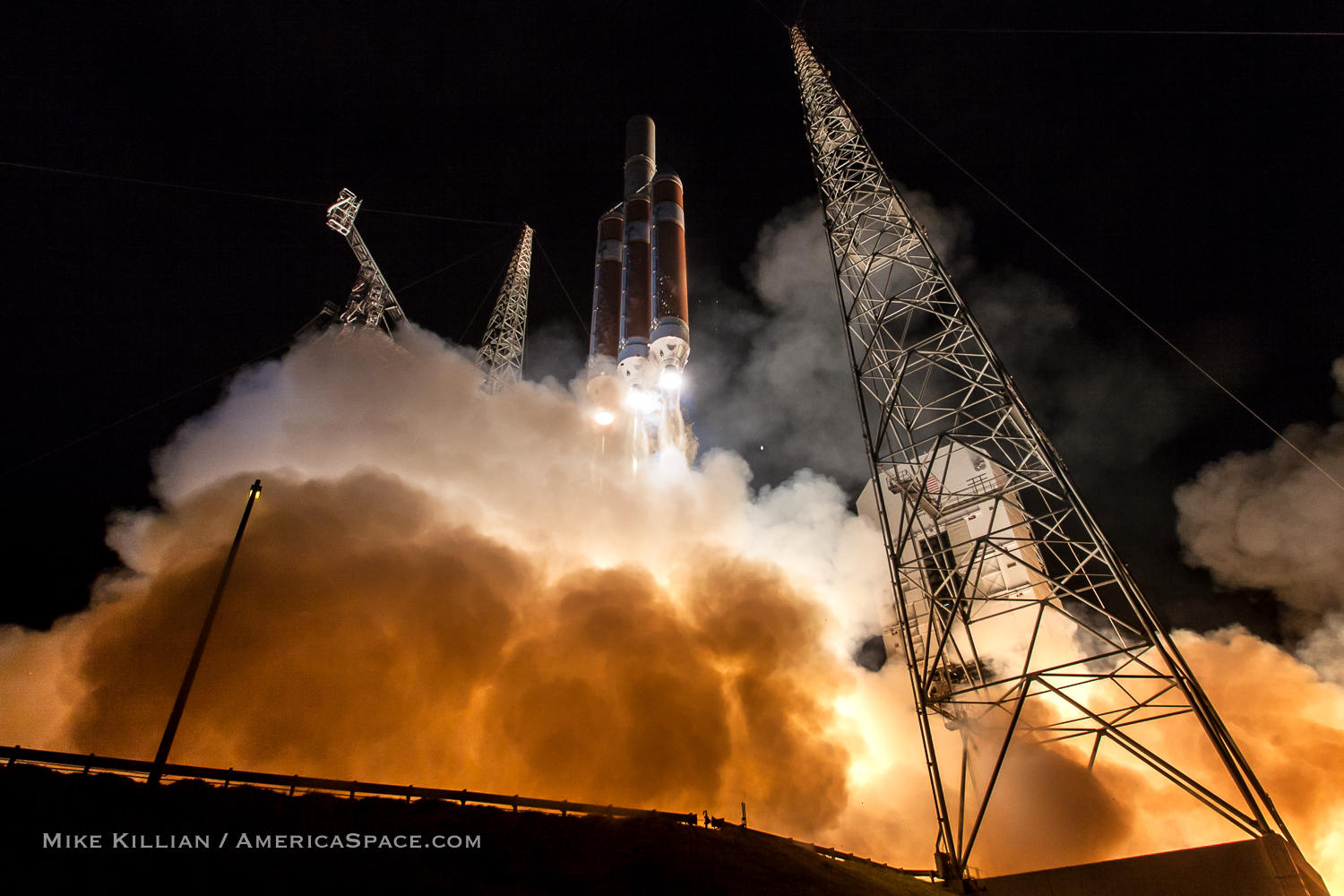
Pending Mother Nature, less than a day remains before the six-decade-plus Delta Era is set to come to a thunderous close, with the final curtain-call of the triple-barreled Delta IV Heavy from Space Launch Complex (SLC)-37B at Cape Canaveral Space Force Station, Fla. Liftoff of the 235-foot-tall (72-meter) behemoth—which comprises three Common Booster Cores (CBCs) and a powerful Delta Cryogenic Second Stage (DCSS) and was until February 2018 the world’s most powerful active operational rocket—is targeted for 1:40 p.m. EDT Thursday, although weather remains the long pole in the tent, offering only 30-percent favorability odds.
Despite the gloomy outlook, teams from United Launch Alliance (ULA), the National Reconnaissance Office (NRO) and the U.S. Space Force gathered Wednesday in ULA’s Delta Operations Center (DOC) at the Cape in support of the Launch Readiness Review (LRR) for the 16th and final Delta IV Heavy mission and the 389 th and last outing by a member of the Delta rocket family since May 1960. Led by ULA Launch Director Tom Heter III, the LRR incorporated both in-person and teleconferencing participants to assess the readiness of the rocket and mission assets, the status of pre-flight processing milestones and the significant obstacle posed by the weather.
At the end of the meeting, all leaders were polled for their state of preparedness for tomorrow’s launch and declared a unanimous “Ready” to proceed. The LRR concluded with the formal signing of the Launch Readiness Certificate.
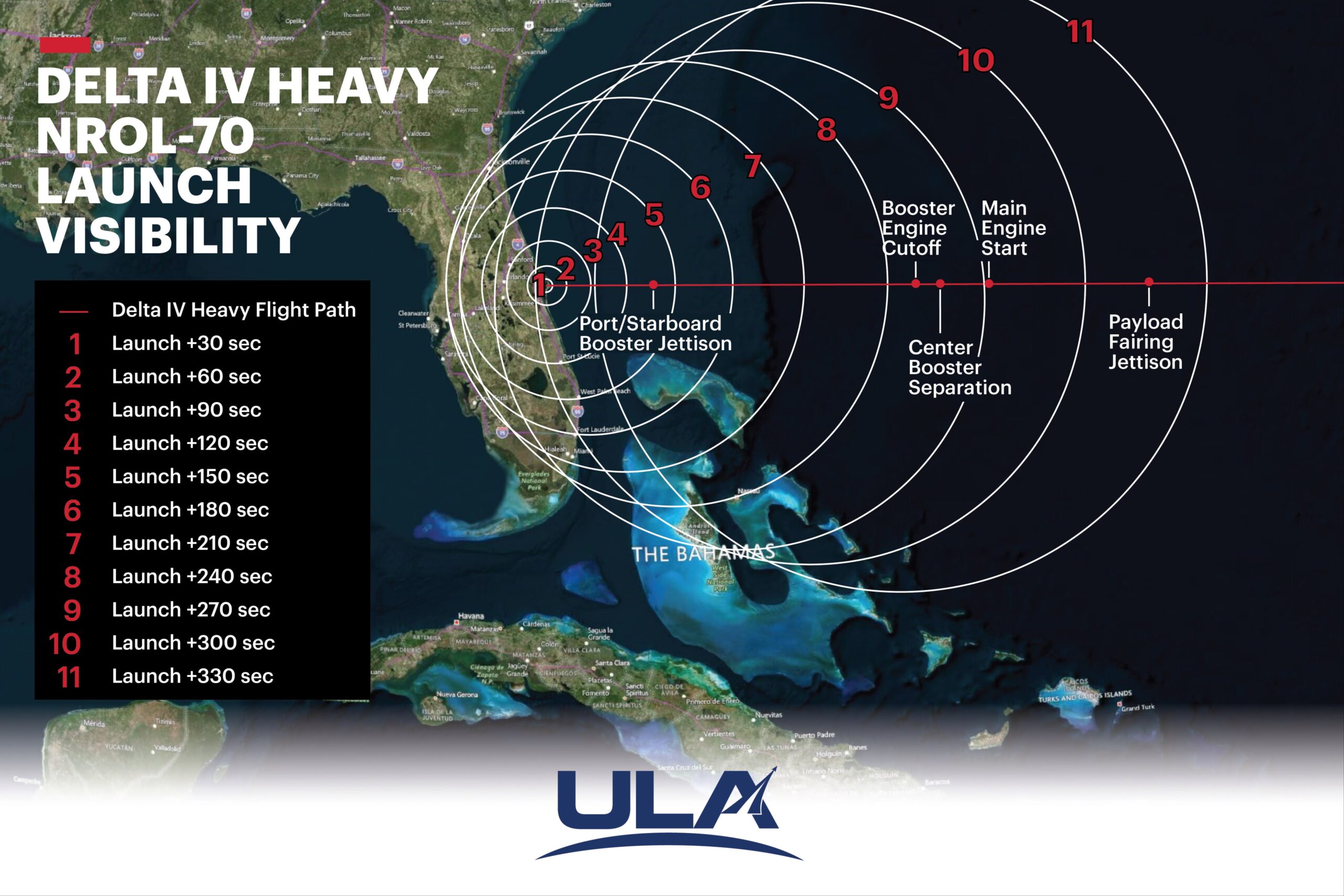
Thursday’s opening launch attempt offers only 30-percent odds of favorability, improving marginally to 60-percent “Go” for Friday’s backup attempt. “A cold front approaching from the northwest will bring more clouds, scattered showers and possibly a few thunderstorms to the area late tonight into Thursday morning,” noted the 45th Weather Squadron at Patrick Space Force Base in its L-1 update, issued earlier today.
“This front is expected to shift onshore by the opening of the launch window, taking most of the showers and clouds with it,” the 45th added, citing potential violations of the Cumulus Cloud Rule and Ground Winds Rule as its principal areas of concern. “However, winds will increase just ahead of and especially behind this frontal boundary, becoming quite gusty during the afternoon and evening tomorrow.”
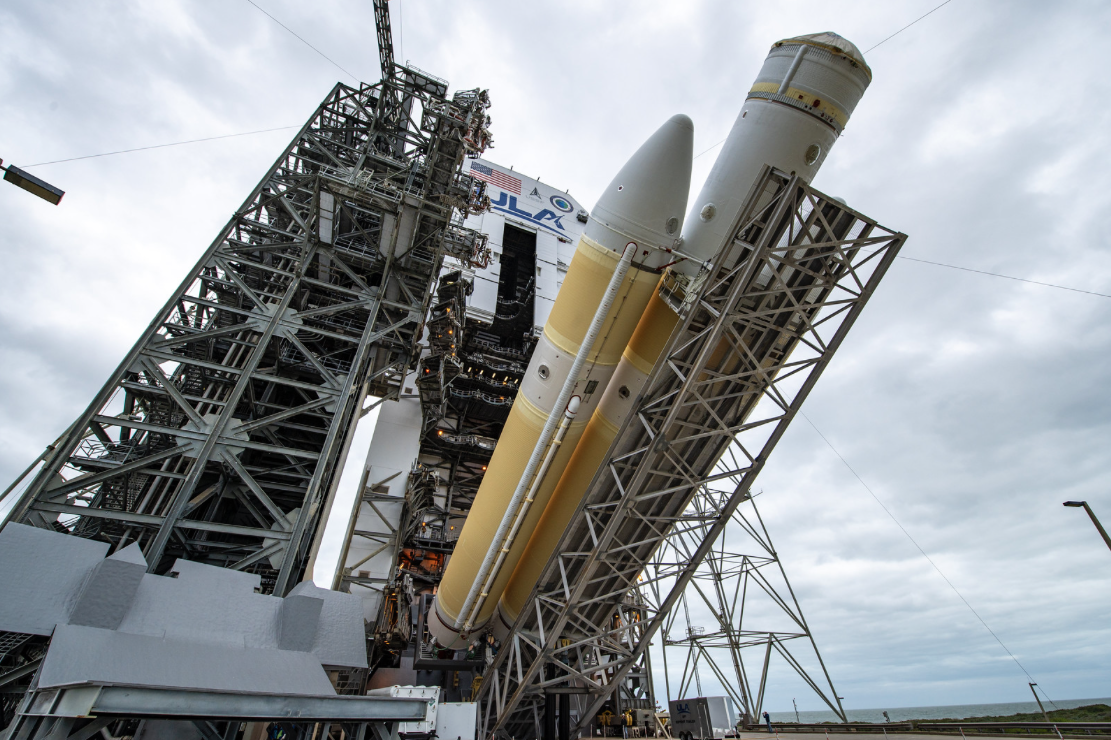
A slippage to Friday offers marginally better odds “as the parent low-pressure system pushes northeast of the area and high pressure settles across the Southeast U.S.,” although breezy conditions will likely persist. If ULA elects to postpone beyond Friday, teams will stand down over the weekend and aim for a third opportunity on Monday, by which time the high-pressure system is expected to retreat out into the Atlantic Ocean with the promise of 90-percent-favorable conditions at the start of next week.
Primary payload is NROL-70, the fifth and last mission under a $1.18 billion Launch Operations Support (LOPS) contract modification awarded by the Space and Missile Systems Center (SMC), in partnership with the NRO, to ULA in September 2019. The contract, which reportedly saved $455 million, followed on the heels of an earlier Launch Vehicle Production Services (LVPS) contract awarded in October 2018 for a group of highly classified NRO payloads dedicated to national security: the many-times-delayed NROL-44, which finally flew in December 2020, NROL-82, launched in April 2021, NROL-91 in September 2022—the final Delta IV Heavy launch out of Vandenberg Space Force Base, Calif.—and most recently last June’s NROL-68 from the Space Coast.
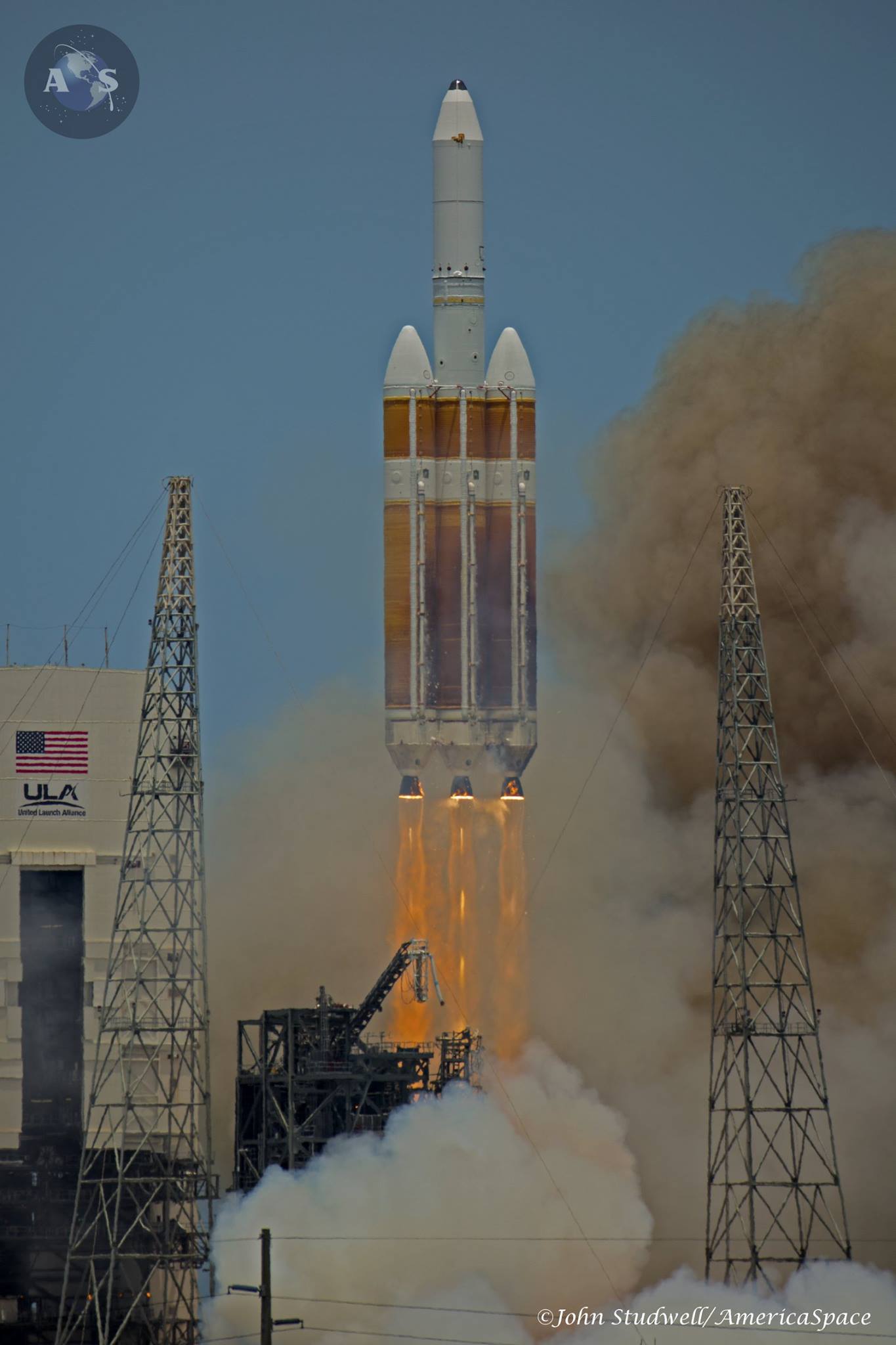
Delta IV Heavy hardware for NROL-70 began arriving at the Cape in May of last year, when the 134-foot-long (40.8-meter) central CBC was delivered from ULA’s Decatur, Ala., manufacturing facility to the wharf at Port Canaveral, aboard the R/S RocketShip vessel. Over the next several months, the center core was mated with its port and starboard CBCs, followed by the 45-foot-long (13.7-meter) Delta Cryogenic Second Stage (DCSS), inside the Horizontal Integration Facility (HIF). Also completed in the HIF, the Launch Mate Unit (LMU) was fastened to the three CBCs to serve as a structural base when it stands atop SLC-37B’s launch table.
Last 19 December, the 170-foot-long (51.8-meter) integrated CBC/DCSS stack—minus its payload fairing—was transferred horizontally via a 36-wheeled, diesel-powered transporter from the HIF to the pad. It was raised vertical the next day as part of the Launch Vehicle On Stand (LVOS) milestone and on 26 February the 65-foot-long (19.8-meter) “trisector” Payload Fairing (PLF) which encapsulates the NROL-70 spacecraft was added to the stack, topping-out the vehicle at over 235 feet (72 meters) high.
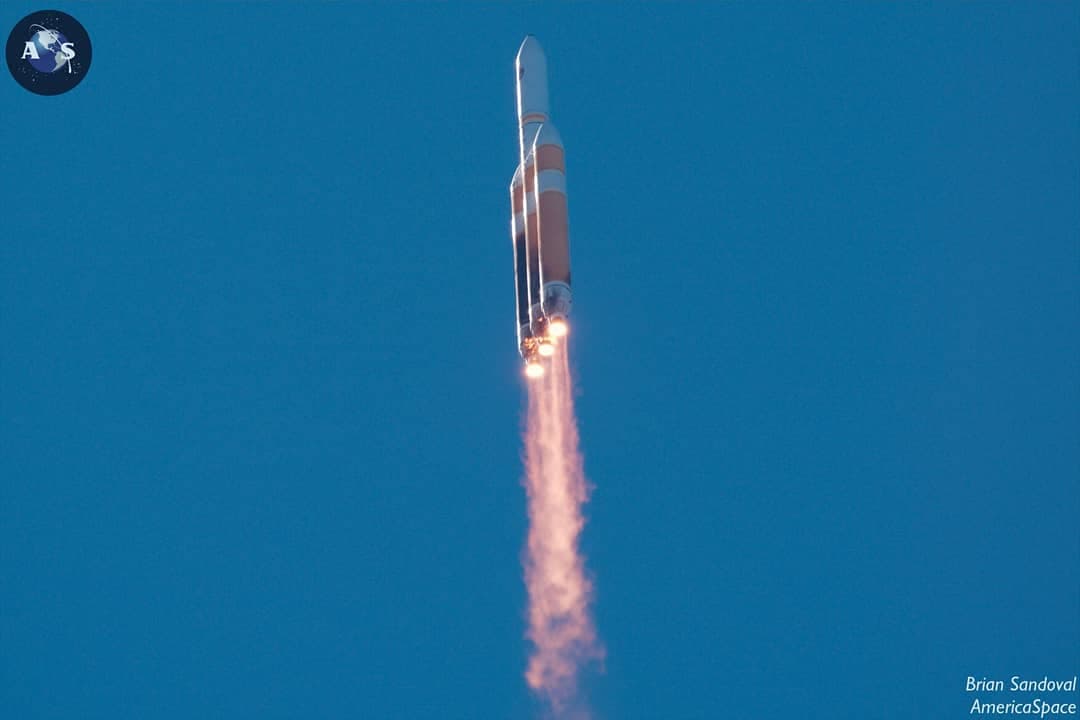
“Everything’s looking great and we’re on track to launch another vitally important national security capability into space,” said Col. Jim Horne, senior materiel leader for the U.S. Space Force’s Space Systems Command (SSC) Launch Execution Delta. “We’ve worked alongside ULA and in close co-ordination with our NRO partners to prepare this Delta IV Heavy, our last Delta ever, and in just a few days the team’s hard work will culminate in this highly anticipated and historic launch.
“These launches place critical capabilities into orbit for our nation and our allies in what are dynamic times for the space community,” the colonel continued. “Every member of our launch team understands what’s at stake and works with care and efficiency to prepare for what’s going to be a tremendous launch.”
And although tomorrow’s launch is the grand finale in a 389-mission line of Delta vehicles flown since May 1960, the Delta IV Heavy has been a relatively new iteration of this decades-old fleet. It entered service in December 2004 and with NROL-70 will close out a stellar career with 16 missions, delivering 12 classified NRO payloads uphill, as well as the final Defense Support Program (DSP) early-warning satellite in November 2007, the Exploration Flight Test (EFT)-1 of NASA’s Orion spacecraft in December 2014 and the Parker Solar Probe in August 2018.
Due to the classified nature of NROL-70, little detail has been fleshed onto the mission’s trajectory, other than the opening handful of minutes of flight, terminating with the separation of the payload fairing at T+6 minutes and 37.1 seconds. The Heavy’s three CBCs—each equipped with a single RS-68A main engine—will ignite at T-5 seconds, powering the stack off the pad at T-0 under 2.1 million pounds (1 million kilograms) of thrust.
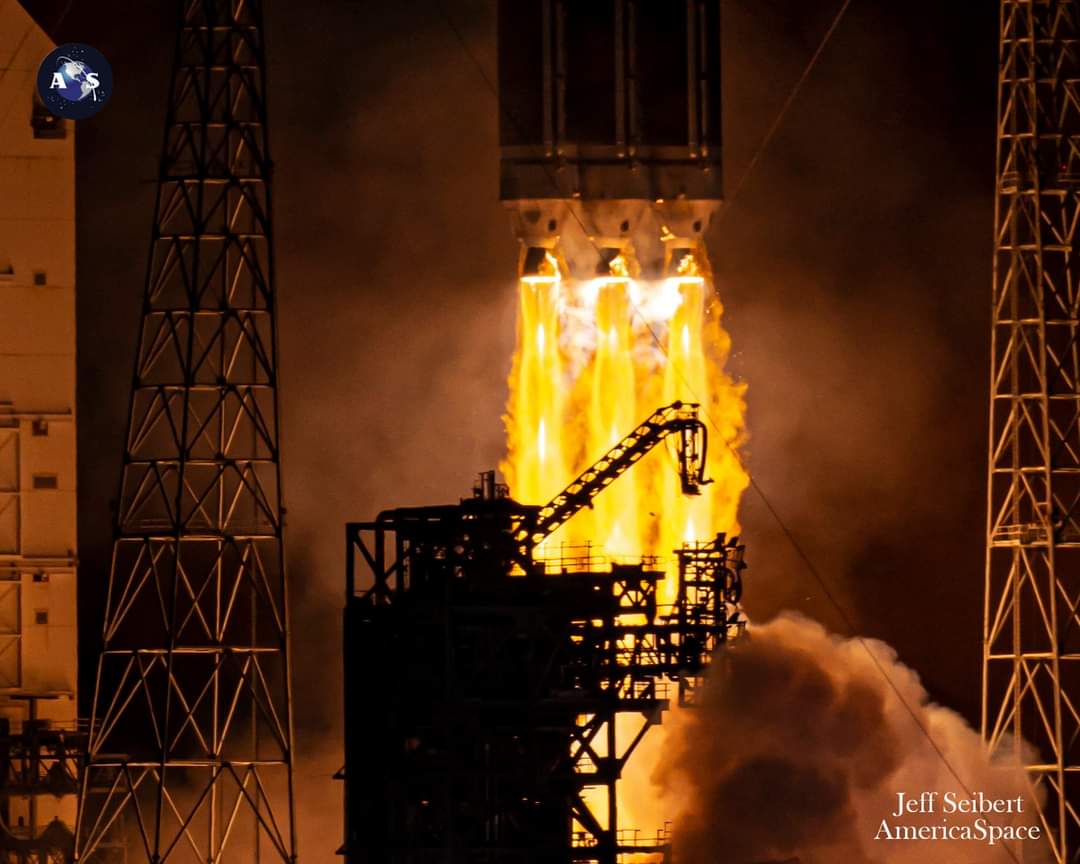
Seventy-eight seconds into the NROL-70 launch, the triple-barreled booster will exceed the speed of sound and experienced “Max Q”, a phase of maximum aerodynamic turbulence upon its airframe. A few seconds shy of four minutes after leaving SLC-37B, the port and starboard CBCs will be jettisoned, with the center core slated to shut down at five minutes and 35 seconds into the flight.
The turn will then come for the DCSS, whose single RL10C-2-1 engine will ignite about six minutes into ascent. The PLF will be discarded 40 seconds later, exposing the NROL-70 payload to the ultra-high vacuum of space for the first time. Remaining NROL-70 mission milestones (as is customary with classified flights of this nature) are unannounced. Also shrouded in secrecy is the nature of NROL-70 itself, thought to be an Orion/Mentor Signals Intelligence (SIGINT) satellite, bound for geostationary orbit.




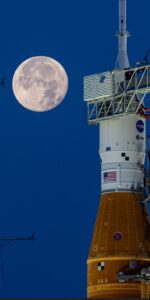
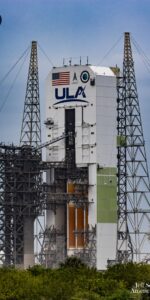
One Comment
Leave a ReplyOne Ping
Pingback:After Delta IV Heavy’s Swansong, Cape Roars to Accelerated Falcon 9 Launch Cadence - AmericaSpace